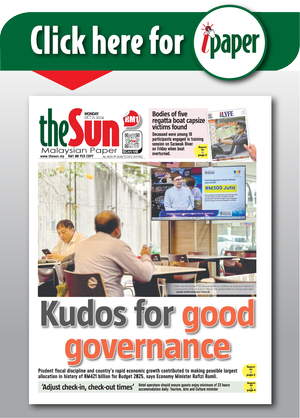PETALING JAYA: The government’s announcement of a “victory” in reducing the United States’ tariffs on Malaysian exports from 25% to 19% has drawn cautious reactions from economists, who argue that the move may not deliver the relief many are expecting.
While the revised rate is lower, experts point out that the new figure is still a sharp increase from historically minimal tariffs and will likely dampen Malaysia’s trade prospects for months to come.
Centre for Market Education CEO Dr Carmelo Ferlito said the narrative of a tariff “reduction” is misleading.
“Tariffs were never 25% or 22% or 40% to begin with,” he said.
“They were as low as 2% to 3%, but (US President Donald) Trump threatened to raise them to 22% or 25% or even 40%. Nineteen per cent is a reduction against what was threatened, so de facto, it is not a reduction but an increase.”
Ferlito stressed that tariffs are inherently damaging to global trade, restricting the flow of goods and services and ultimately harming consumers and workers on both sides.
“Tariffs reduce occasions for trade,” he said. “This means less choice for consumers but also job losses, not just for Malaysia, but for the world.”
Universiti Kebangsaan Malaysia’s Faculty of Economics and Management lecturer Dr Mustazar Mansur said the tariff move reflects broader policy changes in Washington under Trump’s second term.
“Trump wants to shift the US from being a consumer country to a producer country. By doing this, he aims to create more job and business opportunities domestically, even if it means imposing higher costs on trading partners.”
Mustazar said the measure aligns with the administration’s “US for US” slogan, signalling a pivot towards protecting American industries, a move that inevitably pressures export-reliant economies like Malaysia’s.
Bank Negara Malaysia’s decision to revise its 2025 growth forecast and lower interest rates underscores the seriousness of the trade headwinds, he added.
“Bank Negara is reacting to uncertainty not just from tariffs, but also from global geopolitical tensions like Ukraine and Russia, Israel and its neighbours, India and Pakistan,” Mustazar said.
“As an open economy, Malaysia is forced into trade and is very sensitive to these external shocks.”
He warned that the 19% tariff, though lower than the threatened 25%, will still raise costs for Malaysian exporters, particularly in the semiconductor sector, a major export to the US.
“Previously, many of these goods faced near-zero tariffs,” he said. “At 19%, they become more expensive, which affects competitiveness, pricing strategies and even currency movements.”
Both economists highlighted that SMEs are likely to bear the brunt of the new trade barrier.
Mustazar pointed out that SMEs already grapple with higher costs from minimum wage hikes, electricity tariffs and subsidy rationalisation, leaving little room to absorb additional trade-related expenses.
“Inflation in imported raw materials will push up production costs,” he said. “SMEs may have to pass these costs on to consumers or shift from labour‑intensive to more capital‑intensive operations, which isn’t easy in the short term.”
For Ferlito, the most effective response lies not in subsidies or protectionism, but in structural reforms to improve Malaysia’s business environment.
“The only useful government support now comes from regulations that make doing business easier, limiting compliance burdens, slashing whatever hinders competitiveness, so our players go out stronger in the market,” he said.
Looking ahead, both experts expect Malaysian exporters to face a challenging year. The combination of higher tariffs, softer global demand and currency pressures will force companies to adapt, whether through diversification of markets, moving up the value chain or cutting costs.
“International trade will suffer,” Ferlito cautioned. “It’s not just Malaysia, everyone loses when barriers like this are erected.”
Mustazar agreed but noted that Malaysia’s open economy has historically shown resilience in adjusting to external shocks.
“The key will be how quickly exporters can recalibrate,” he said. “We have to be careful, but with the right adjustments in investment and operations, the economy can still grow, but more modestly.”









